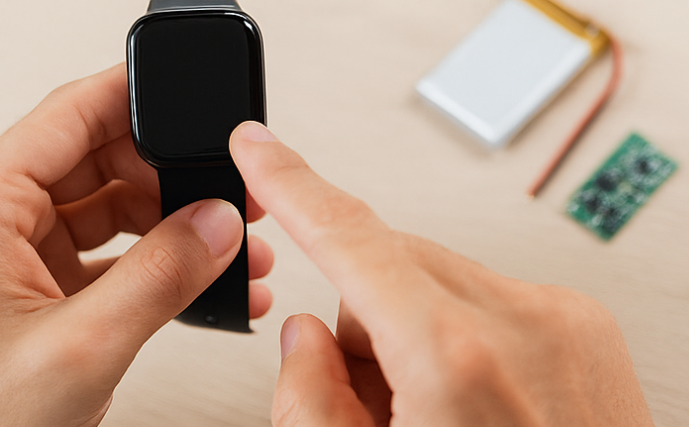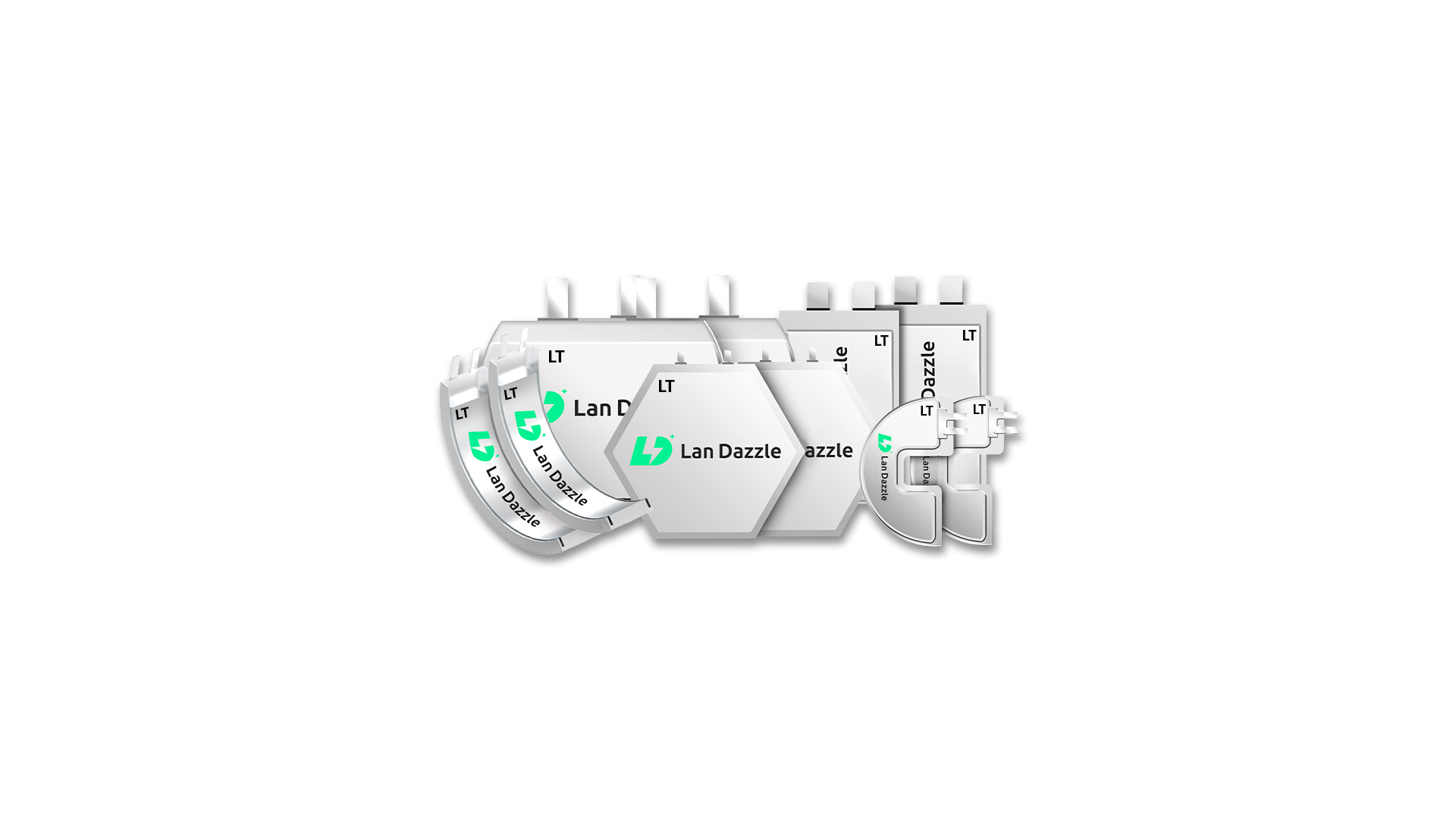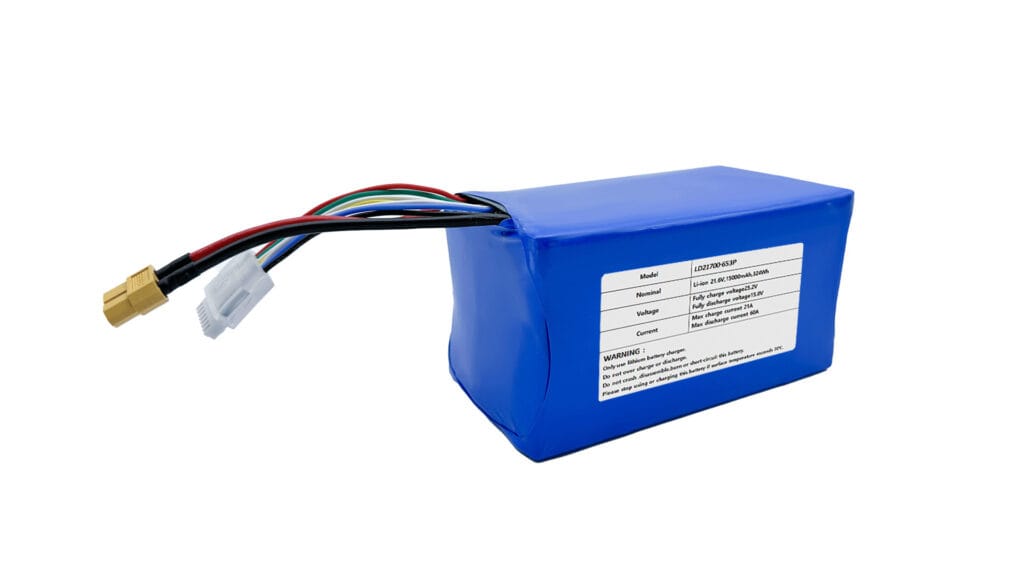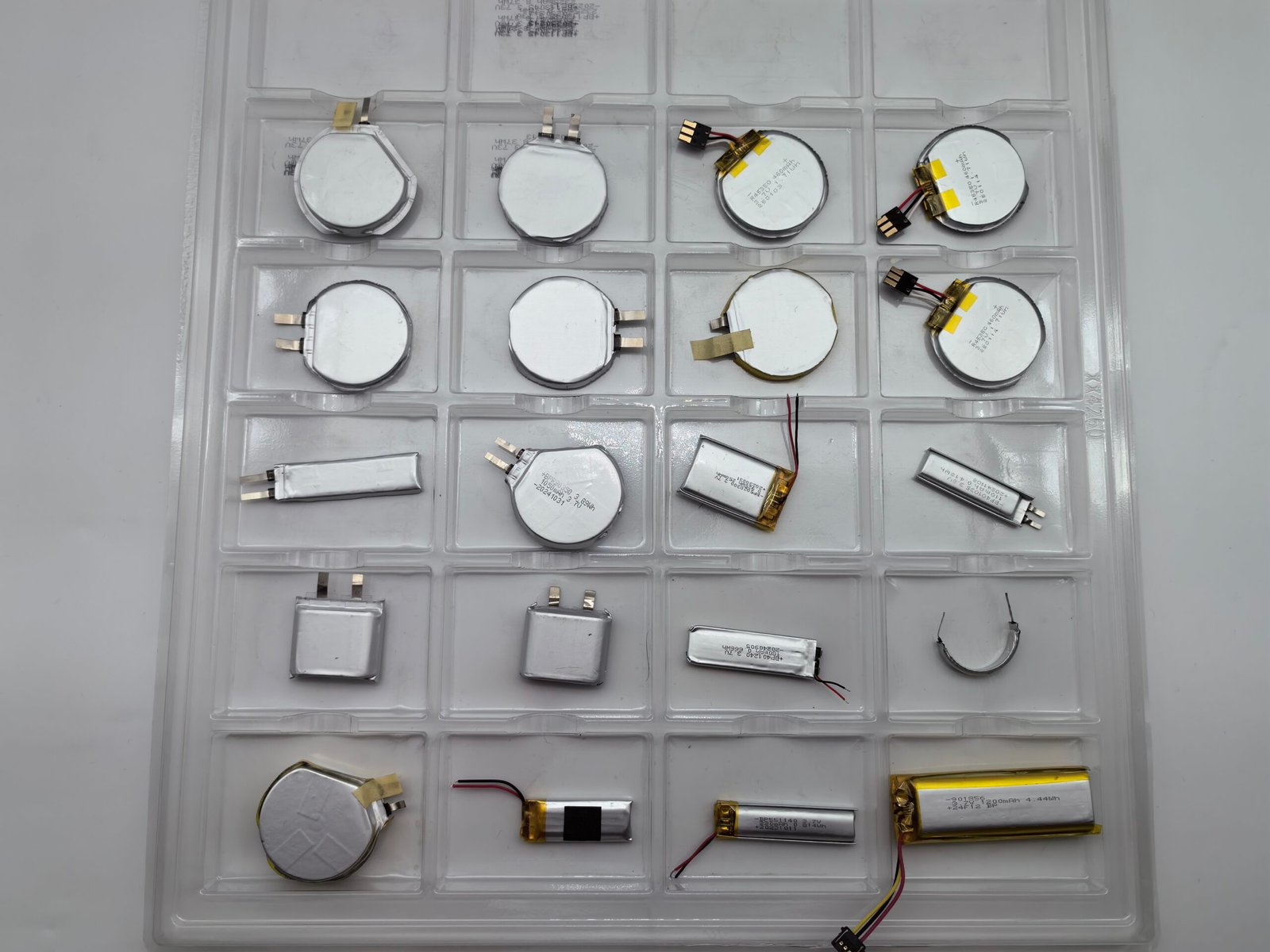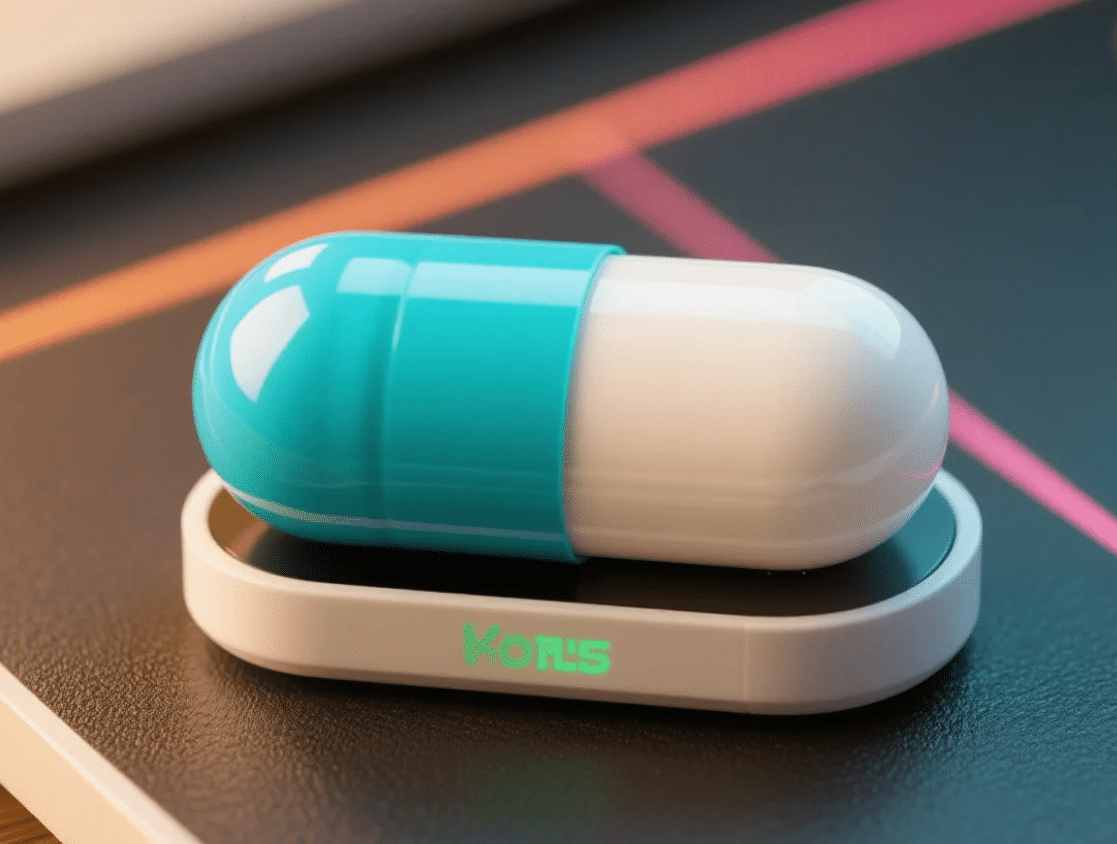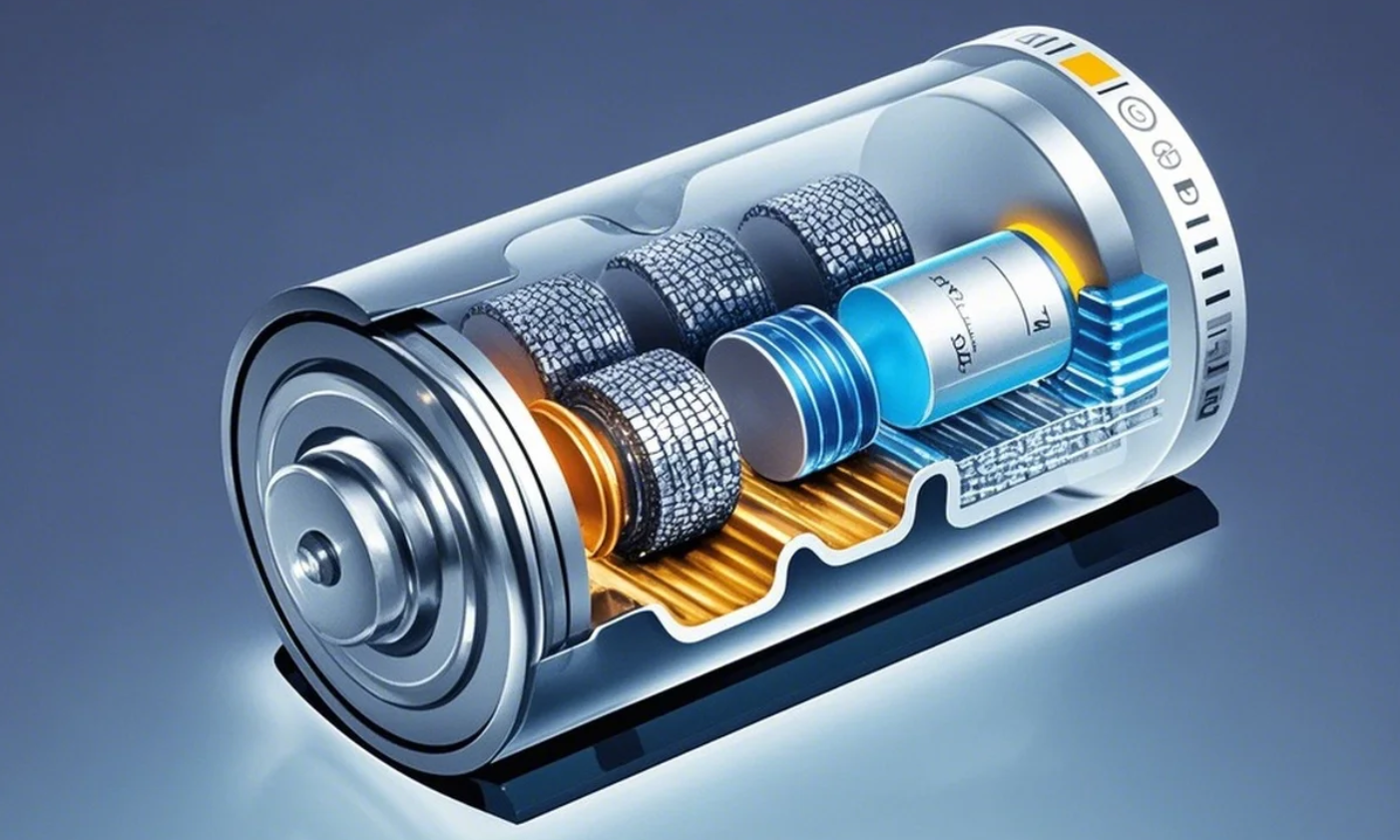We all know the frustration of seeing that dreaded low battery warning—especially when we rely so heavily on smart wearables that keep us connected and active throughout the day. But how to extend battery life in smart wearables without increasing size?
In a market demanding smaller, lighter, and sleeker devices, traditional batteries fall short: standard cells force designers to compromise on ergonomics or capacity. Custom battery break this trade-off by using advanced materials, unique shapes, and intelligent management systems to unlock up to 25% more runtime—all without changing device size or shape.
The Form Factor Challenge: Why Traditional Batteries Fall Short
Understanding “Form Factor” in Electronics Design
In the world of product development, “form factor” refers to the size, shape, and physical specifications of a piece of hardware. It’s the blueprint that dictates a device’s ergonomics, aesthetics, and portability. From the slim profile of a smartphone to the compact housing of a life-saving medical implant, the form factor is a critical design constraint that engineers must work within. Historically, one of the most significant components dictating this form factor has been the battery.
The Limitations of Off-the-Shelf Batteries
The vast majority of electronic devices have traditionally been powered by off-the-shelf, standard-sized batteries. The most common of these is the cylindrical 18650 lithium-ion cell, a workhorse of the industry. While reliable and cost-effective to mass-produce, these standard cells have a critical drawback: they are rigid and unforgiving in their shape.
This “one-size-fits-all” approach forces product designers to create their devices around the battery, rather than integrating a power source that fits seamlessly within their ideal design. This often leads to compromised ergonomics, bulkier products, and, most importantly, wasted internal space that could have been used for additional features or a larger, more powerful battery.
The Inverse Relationship Between Size and Power in Standard Cells
With standard batteries, there’s a simple, and often frustrating, rule: if you want more power (longer runtime), you need a bigger battery. This creates a direct conflict with the market trend toward miniaturization. For developers of cutting-edge technology—be it a wearable fitness tracker, an augmented reality headset, or a discreet IoT sensor—simply adding more or larger cells is not a viable option. It would compromise the very essence of the product. This is the wall that traditional battery technology hits, and it’s where the need for a more intelligent, flexible solution becomes undeniable.
The Core of Innovation: How Custom Battery Tech Delivers More Power in the Same Space
1. Advanced Cell Chemistry and High Energy Density Materials
The primary driver behind longer runtimes is energy density, which measures the amount of energy that can be stored in a given volume (volumetric energy density, Wh/L) or weight (gravimetric energy density, Wh/kg). The field of battery chemistry is constantly evolving, with researchers developing new materials for anodes and cathodes that can hold more lithium ions.
While standard batteries may use older, more established chemistries, custom solutions can incorporate the latest high-energy-density materials. Innovations in silicon anodes, for example, can significantly increase a battery’s capacity compared to traditional graphite anodes. By selecting and optimizing the most advanced materials, custom battery manufacturers can pack more power into the same physical footprint. In fact, lithium-ion battery energy density has been increasing by an average of 5-8% annually, a trend that custom solutions are uniquely positioned to capitalize on.
2. Optimizing Internal Space: Custom Cell
Imagine trying to fill a complexly shaped container with rigid, cylindrical blocks. You would inevitably have large, unusable gaps. This is what happens when designers try to fit standard batteries into a sleek, modern device.
Custom battery technology solves this problem by creating cells with unique geometries. Instead of being limited to cylinders or rectangles, custom lithium-ion or lithium-polymer cells can be molded into curved, L-shaped, trapezoidal, or ultra-thin configurations. This allows the battery to fit perfectly within the device’s chassis, eliminating wasted space and maximizing the available internal volume for energy storage. This optimized pack assembly can lead to a 15-25% increase in capacity in the same form factor compared to using standard cells.
3. The Role of a Sophisticated Battery Management System (BMS)
A custom battery is more than just a collection of cells; it’s a smart power system. At its heart is the Battery Management System (BMS), a sophisticated electronic circuit board that acts as the battery’s brain. A custom-designed BMS is tailored to the specific cell chemistry and the device’s power requirements, offering several advantages for extending runtime:
-
Precision Monitoring: The BMS continuously monitors the state of charge (SoC), voltage, current, and temperature of each cell. This precise data allows for more efficient charging and discharging, preventing energy loss.
-
Cell Balancing: In a multi-cell pack, the BMS ensures all cells are balanced, meaning they charge and discharge at the same rate. This prevents weaker cells from degrading faster and extends the overall cycle life of the battery pack.
- Optimized Power Delivery: A smart BMS can communicate with the host device to manage power consumption, intelligently reducing output for low-priority functions to conserve energy when the battery is low.
4. Electrode Design and Manufacturing Process Optimization
-
Increasing Electrode Thickness
Within the fixed battery thickness, engineers can fine-tune the electrode coating process to increase the active material layer thickness while balancing ion/electron transport and mechanical stability. This increases the amount of active material per unit area without enlarging the battery size. -
Improving Electrode Compaction Density
Using advanced calendaring techniques, the electrode sheets can be compressed to a higher density, reducing internal voids and packing more active material in the same volume. This directly raises the energy density. -
Using Thinner and Lighter Current Collectors
Replacing standard copper or aluminum foils with ultra-thin versions reduces inactive material weight and volume, increasing the ratio of active material inside the battery.
5. Electrolyte and Electrode Interface Engineering
-
Optimizing Electrolyte Composition
By refining electrolyte salt concentration and additive ratios (without changing base chemistry), the electrode/electrolyte interface can be stabilized, promoting more reversible capacity and longer cycle life. -
Enhancing Electrode Surface Treatment
Techniques such as coating electrodes with protective layers or pre-lithiation help minimize side reactions, preserving active material and thus maintaining higher capacity during cycling.
6. Increasing Internal Cell Layer Count (Stacking)
-
Precise Electrode Layer Stacking
Employing advanced stacking and winding processes allows increasing the number of positive and negative electrode layers inside the battery cell without increasing its external thickness. -
Reducing Separator and Foil Thickness
Using ultra-thin separators and foils frees up internal space for more active material layers, effectively increasing capacity.
7. Manufacturing Precision and Internal Structural Density
-
High-Precision Coating and Cutting
Minimizing material wastage and defects through improved process control enhances material utilization and consistency, contributing to capacity gains. -
Improving Internal Packing Density
Advanced winding and stacking machinery can tighten the internal structure, reducing dead spaces and increasing active material per unit volume.
8. Thermal Management and Safety Enhancements
-
Effective Heat Dissipation
Optimizing battery thermal design reduces capacity loss due to temperature fluctuations, improving practical usable capacity and battery longevity without physical changes.
The Process of Developing a Custom Battery Solution
Creating a custom battery is a collaborative and meticulous process that ensures the final product meets the exact needs of the device and the end-user.
Consultation and Defining Requirements
The process begins with a deep-dive consultation where engineers work with the client to understand the application’s specific requirements. This includes:
- Electrical Needs: Voltage, capacity (mAh), maximum discharge current, and cycle life expectations.
- Physical Constraints: The precise dimensions, shape, and weight limitations of the available space.
- Factores medioambientales: The operating temperature range and any exposure to moisture or vibration.
Prototyping and Testing
Once the requirements are defined, the engineering team designs the custom cell and pack assembly using CAD software. A prototype is then built and subjected to rigorous testing. This includes electrical performance tests, safety certifications (such as UN38.3 for transportation), and cycle life analysis to ensure the battery performs reliably and safely under all expected conditions.
Manufacturing and Quality Assurance
After the prototype is approved, the battery moves into production. Reputable custom battery manufacturers adhere to strict quality management standards, such as those outlined by ISO 9001, to ensure consistency and reliability in every unit produced. This commitment to quality is crucial for delivering a power source that is both high-performing and trustworthy.
En Lan Dazzle, we specialize in delivering high-performance custom lithium polymer batteries tailored precisely to your device’s unique requirements. Whether you need ultra-thin, curved, or irregular-shaped batteries, our expert engineering team collaborates closely with you to design, prototype, and manufacture power solutions that maximize capacity without compromising size or weight.
With strict quality control, advanced materials, and smart battery management systems, our custom batteries empower wearable devices to achieve longer runtimes, improved safety, and enhanced user experience.
Discover how our tailored battery technology can elevate your smart wearables to the next level—contact us today to start your custom battery project.
Conclusión
The limitations of off-the-shelf batteries no longer have to dictate the future of product design. As demonstrated by innovators like Apple, DJI, and Medtronic, custom battery technology has fundamentally shifted the paradigm. It proves that it is possible to achieve longer runtimes without compromising a device’s sleek, compact form factor. By leveraging advanced chemistry, innovative cell geometries, and intelligent battery management systems, custom solutions provide the design freedom and performance enhancement that modern technology demands.
From extending the operational capabilities of critical medical and industrial equipment to powering the next generation of consumer electronics, the impact of this technology is both broad and deep. As you design your next product, consider moving beyond the standard. Explore how custom battery solutions can provide the power you need in the exact shape and size you want, and unlock the true potential of your innovation.
